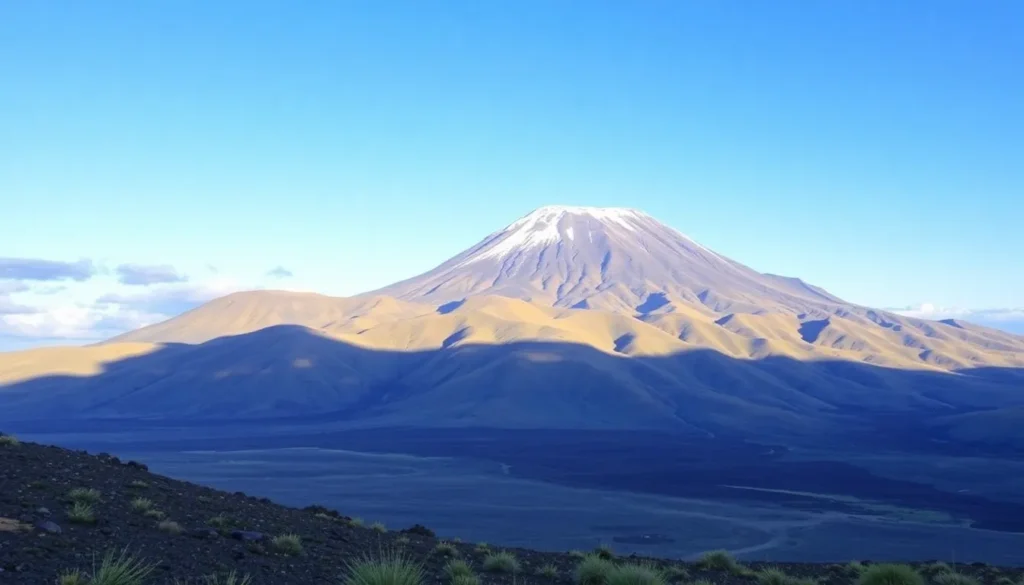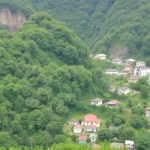Guide to Visiting Cotopaxi National Park in Ecuador

Standing tall at 5,897 meters, the Cotopaxi volcano is not just the second highest peak in Ecuador but is also one of the country's most iconic symbols. In your journey through this beautiful nation, a visit to this majestic giant is a must. To help you make the most of your trip, we offer a comprehensive guide on how to visit Cotopaxi National Park, filled with valuable information and personal experiences.
Beyond the towering volcano, this national park spans approximately 33,000 hectares, featuring a high-altitude landscape that ranges from 3,500 to 4,000 meters above sea level. The captivating volcanic scenery makes it an ideal destination for nature lovers and adventure seekers alike.
Cotopaxi, with its perfectly conical shape and year-round snow-capped summit, draws the attention of photographers and mountaineers aiming to quench their thirst for adventure. This active volcano is among the most active globally and is considered the most dangerous in Ecuador due to the high population density in its vicinity. Its most recent eruption occurred in 2015, which was relatively minor, but experts anticipate more significant activity in the future.
The park also hosts another volcano, Rumiñahui, which stands at a height of 4,722 meters and is currently dormant. Both volcanoes are part of the renowned “Avenue of the Volcanoes,” a corridor of volcanic peaks located in central and northern Ecuador. In addition to the towering giants, Cotopaxi National Park features various rivers and small lagoons with crystal-clear waters, serving both agricultural and human consumption needs.
The park's fauna includes wild horses (often seen around Limpiopungo Lagoon), paramo wolves (one crossed our path during our visit), deer, and possibly even pumas and spectacled bears. Birdwatchers will delight in spotting species such as hawks, sparrowhawks, and condors, so be sure to bring binoculars if you're an ornithology enthusiast.
Reaching Cotopaxi National Park
Understanding how to reach the park is crucial, as it greatly impacts your overall experience. There are two main access points to Cotopaxi National Park:
- North Entrance: Accessible from two points—north via Sangolquí and west from Machachi. After traveling 18 km from Sangolquí or 15 km from Machachi, both routes converge near the Chilcabamba Lodge in an area known as El Pedregal, followed by an additional 8 km to the park entrance.
- Caspi Entrance: Located to the west of the volcano, this route branches off the Panamerican Highway at kilometer 42. The initial section is paved, followed by a passable dirt road. We used this route on our way out after visiting Cotopaxi.
Note that Google Maps does not clearly mark this path, but it leads directly to the park once you reach the access point. Utilizing apps like Maps.me can help navigate these less-traveled roads.
At the control points, visitors must register their details, which allows free access to the park.
Making the Most of Your Visit
If you plan to explore Cotopaxi independently using a rental car, we recommend the following itinerary:
- Start from the Caspi entrance and head to the visitor center (museum), where you'll find fascinating exhibits about the national park.
- After a few kilometers, take the left turn toward Limpiopungo Lagoon, known for its scenic views and birdwatching opportunities. This is a great spot for a short trek around the lagoon.
- If you wish to proceed, continue to the refuge parking area, which is about 7 km along a steep dirt path. We chose not to go up because clouds began to cover the volcano.
- Should you make it to the parking area (at 4,500 meters), you can take a 1 km hike to the José Rivas Refuge (at 4,800 meters), which has a café offering hot drinks.
- Return to the main road and head toward the north access to complete your visit, then connect back to the Panamerican Highway via Machachi.
The total drive covers approximately 70 km. Without hikes or ascents, your visit to Cotopaxi can last around 3-4 hours.
Visiting Cotopaxi on a Tour
If you prefer a guided experience, consider booking a private 4x4 tour that lasts 5-6 hours, taking you to the park's highlights. This flexible plan allows you to customize your itinerary based on your preferences, such as whether you want to hike more or simply enjoy scenic viewpoints.
Where to Book: These tours are often offered by nearby accommodations, can be arranged online, or even at the access control points, where a guide may be available for hire. If you opt for this option, park your car at the access point and wait for your guide to pick you up. The cost for this tour typically starts around $60 per vehicle.
Group tours are also available, providing shared transportation in vans that pick up guests from various lodgings. For those interested, we have a contact for one of these tour operators: +59 3993572714.
Recommended Online Tours:
- 2-3 Day Andes Circuit from Quito TOP!
- Cotopaxi and Quilotoa Excursion from Quito
- Cotopaxi Volcano Excursion from Baños
Activities and Attractions in Cotopaxi
Whether you're visiting for a few hours or planning to explore the heights of the volcano, here are some activities to consider:
- Mariscal Sucre Interpretation Center: Also known as the museum, this is the main information hub of the park, featuring excellent exhibits about the volcano and its surroundings. A small botanical garden trail is also available, making it a must-visit spot to begin your adventure.
- Limpiopungo Lagoon: The largest water body in the park, where wild horses can often be spotted. It's perfect for a leisurely stroll around its perimeter and birdwatching from observation points.
- The Spring: Located on the northeastern side of the volcano, this area is where some of the streams originating in the park start. It includes other lagoons like Laguna Santo Domingo and a pre-Incan archaeological site known as Pucará del Salitre, accessible via 4x4.
- Camping: For those looking to sleep under the stars, the park features two camping areas. More details are provided below.
- Ascend to the Glacier or Summit: From the refuge, you can continue your ascent, with the glacier being the most accessible point (around 5,400 meters) and the summit at 5,897 meters being the ultimate challenge.
Accommodation Options Near Cotopaxi
We recommend staying in one of the hotels located in the paramo region, as close as possible to the park entrances while enjoying direct views of the volcano. During our search, we found the best panoramic options in the El Pedregal area, located to the north of Cotopaxi.
While these accommodations tend to be rustic yet top-notch, offering high-quality services, there are also more affordable options available. Be sure to clarify access conditions before booking and inquire whether a 4x4 is necessary.
We ultimately chose to stay at the Chilcabamba Lodge, which exceeded our expectations! The location is ideal, providing stunning views of the volcano right from our accommodation. The service, facilities, and food were all top-notch. While it is on the pricier side, it was the indulgence we fully enjoyed!
The only option within the park is the Tambopaxi Lodge, located near the northern entrance. This lodge offers shared dormitories, private rooms, camping areas (including access to facilities), and a restaurant open to the public.
Camping at Cotopaxi
There are two designated camping areas: La Rinconada and Condor Huayco. Check the informational map for their locations. La Rinconada provides amenities such as bathrooms, a fire area, and even cabins for those who prefer not to carry a tent.
To camp, you must secure permits through the concessions granted to these sites, and reservations are required, which come with a fee.
Ascending to Cotopaxi's Summit
While we aren't seasoned climbers, we learned that Cotopaxi is one of the more accessible summits in South America. Most climbers opt to spend a night at the José Ribas Refuge (reservations are necessary) and set out for the summit at dawn. It's essential to hire a guide before your ascent, as the packages typically include transport to the parking area, the guide (who stays overnight with you), and the necessary gear.
It's crucial to note that this is not a casual hike; it involves ascending to a nearly 6,000-meter peak covered in ice. Not everyone is physically prepared for this, and it should only be attempted under optimal conditions.
Tips for Visiting Cotopaxi
- If possible, rent a 4x4 instead of a compact car like ours (Chevrolet Spark).
- Visit early in the morning when the skies are usually clearer. From around 10 am onwards, clouds tend to roll in, as we experienced.
- Stay near Cotopaxi, ideally from accommodations with direct views of the volcano. Sunsets are breathtaking, and clear days offer fantastic photo opportunities. We highly recommend Chilcabamba Lodge!
- Bring warm clothing, as the elevation results in significant cold. Don't forget sunscreen, a hat, appropriate footwear, and a rain jacket.
- If you start feeling effects of the altitude (dizziness, headache, fatigue), slow down, take breaks, stay hydrated, and consider natural remedies (we purchased coca candies from a vendor at the entrance, though their effectiveness is debatable).
- For more information, visit the official website.
We hope these tips for visiting Cotopaxi help you navigate your journey and fully enjoy this symbol of Ecuador!
Stay updated with our journey in Ecuador by following our Instagram stories!
For more travel tips and resources:
| Save on your trip |
| Find cheap flights to Ecuador here |
| Find accommodation at the best prices here |
| Book activities in Spanish in Ecuador here |
| Get a 5% discount on your IATI travel insurance here |
| Book airport transfers here |
| Learn how to withdraw money without fees here |
| Get a 5% discount on your eSIM from Holafly here |
| Rent a car with the best deals here |
| Find the best travel books and guides here |
| Check out all our articles on Ecuador |

Deja una respuesta